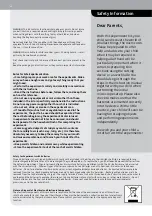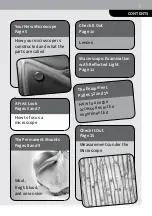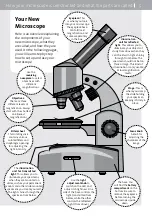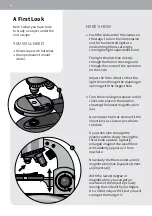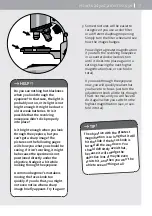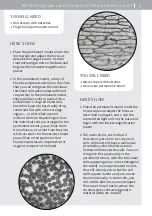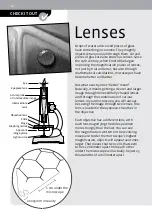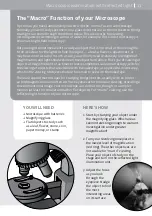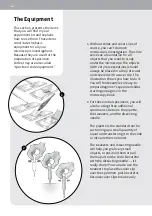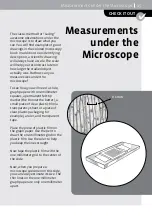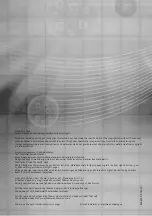
Safety for Experiments with Batteries
Three AA batteries (1.5-volt, type AA/LR6), which could not be included in the kit due to their limited shelf life, are required for use. •
Non-rechargeable batteries are not to be recharged. They could explode! • To replace the 1-5-volt batteries: Remove all batteries from
the battery compartment. Then insert new batteries. Always close battery compartments with the lid. • Batteries are to be inserted
with the correct polarity. • Different types of batteries or new and used batteries are not to be mixed. • Do not mix old and new
batteries. • Do not mix alkaline, standard (carbon-zinc), or rechargeable (nickel-cadmium) batteries. • Exhausted batteries are to be
removed from the toy. • Rechargeable batteries are only to be charged under adult supervision. • Rechargeable batteries are to be
removed from the toy before being charged. • The supply terminals are not to be short-circuited. A short circuit can cause the wires to
overheat and the batteries to explode. • Be sure not to bring batteries into contact with coins, keys, or other metal objects. • Do not
throw batteries into the fire! • Avoid deforming the batteries. • Dispose of used batteries in accordance with environmental
provisions, not in the household trash.
Notes on Disposal of Electrical and Electronic Components
The electronic components of this product are recyclable. For the sake of the environment, do not throw them
into the household trash at the end of their lifespan. They must be delivered to a collection location for electronic
waste, as indicated by the symbol shown here. Please contact your local authorities for the appropriate disposal
location.
WARNING! This kit contains functional sharp edges or points. Do not injure
yourself! Caution is required when handling the sharp dissecting needle,
when cutting objects with the cutting tool or other blades, and when
handling the fragile cover slips made of glass.
Never look directly at the sun either with the naked eye or through the
eyepiece. There is a risk of blinding! Never leave the eyepiece unattended in
the sun — it could cause a fire!
WARNING! Not suitable for children under 3 years. Choking hazard — small
parts may be swallowed or inhaled.
First check the list of parts to be sure all the correct parts are present in the
kit.
Keep the packaging and instructions as they contain important information.
Rules for Safe Experimentation
→ Carefully prepare your work area for the experiments. Make
sure you have enough room and get everything ready that you
might need.
→ Perform the experiments calmly and carefully in accordance
with the instructions.
→ Read the instructions before use, follow them, and keep them
on hand for reference.
→ Do not use any equipment or materials other than those
included in the kit or specifically mentioned in the instructions.
Do not use any power supply other than what is indicated.
→ Do not eat, drink, or smoke in the experiment area.
→ If foodstuffs (such as fruit or vegetables) are used in the
experiments, the part to be used should be separated from
the rest before beginning the experiment. Material used
in experiments should not later be consumed, and should
be disposed of in the household trash after completing the
experiment.
→ Some suggested objects of study may contain contents
that are mildly toxic (such as ivy, tulip, etc.). It is therefore
absolutely necessary to keep these away from your mouth
and mucous membranes and to wash your hands after the
experiments.
→ Keep small children and animals away while experimenting.
→ Store the experiment kit out of the reach of small children.
Dear Parents,
With this experiment kit, your
child can discover the world of
smallest things, the microcosm.
Please be prepared to offer
help and advice to your child
when it may be required. A
helping adult hand will be
particularly important when it
comes to preparing thin
sections using the cutting
device or a razor blade. You
should also go through the
steps in the instruction manual
together with your child when
performing the initial
microscope setup. Please also
check to make sure that the
batteries are inserted correctly
into the device. With a little
practice, your child will soon be
having fun studying objects
and performing experiments
independently.
We wish you and your child a
lot of fun with the experiments!
Safety Information
2


